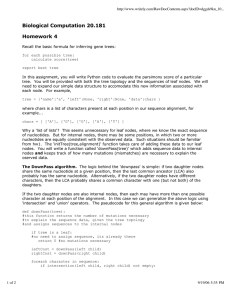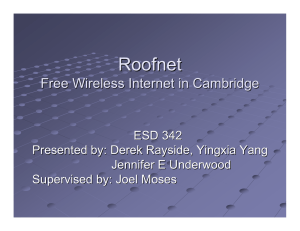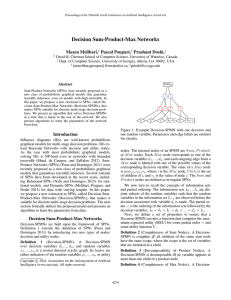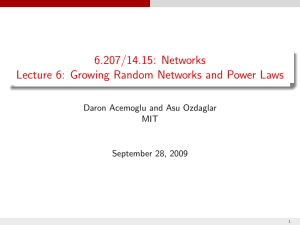Document 13504052
advertisement
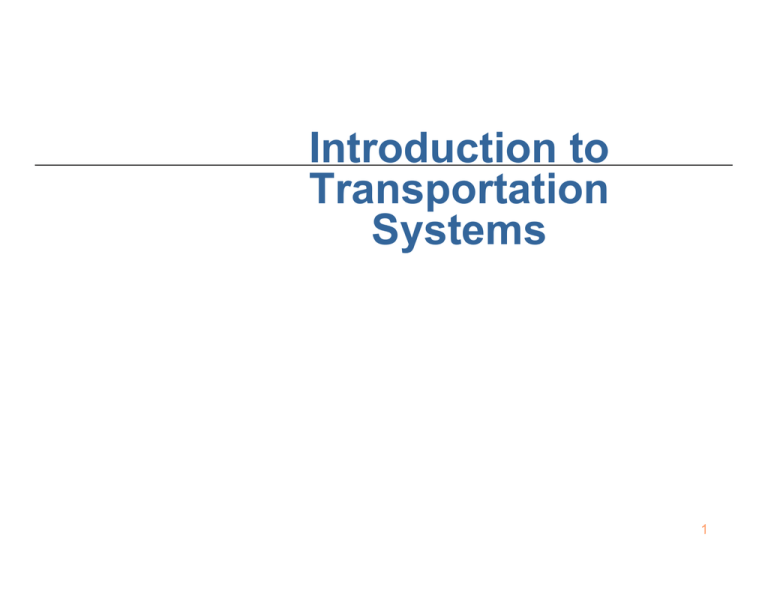
Introduction to Transportation Systems 1 PART I: CONTEXT, CONCEPTS AND CHARACTERIZATION 2 Chapter 5: Networks 3 Node and Link Network Representation NODES LINKS Figure 5.1 4 Networks Transportation networks are interconnected. We have connections between the links through the other basic network elements that are called nodes, which often represent terminals or stations. In most transportation cases, the network is redundant. There are usually multiple ways to travel between nodes. 5 Links Links are typically guideways, highways, rail lines, air corridors, etc. We have links that can take flows, typically of vehicles, in one or both directions. Links often have a capacity (e.g., vehicles/hour). 6 Capacity Capacity defined as a link volume beyond which the travel time is infinite. Travel Time/Capacity Volume ∞ Travel time Capacity Figure 5.2 Volume 7 Link Travel Time: Another Idea Link Travel Time Volume (vehicles/hour) Figure 5.3 8 Hierarchical Networks Highways Local Streets Collector Streets Arterial Streets Expressway 9 Intermodal Network Air Corridors Roads Transit Station Transit Link Airport Park and Ride Air Corridors Figure 5.4 10 Nodes Nodes often represent A terminal yard in a railroad operation An airport A parking lot Nodes have a capacity limit also. 11 Node to Denote Link Change 3 Lanes 2 Lanes PHYSICAL FACILITY intermediate node Link representing 2-lane section Figure 5.5 Link representing 3-lane section 12 Mathematical Operations on Networks 7 9 5 8 6 4 2 3 1 Figure 5.6 13 Origin-Destination Matrix 1 2 3 4 5 6 7 8 9 Figure 5.7 1 2 3 4 0 f12 f13 f14 5 6 7 8 9 0 0 0 0 0 0 0 0 14 Traffic Assignment Assign traffic to shortest path between origin and destination All or nothing assignment Incremental assignment 15 Other Ideas The inverse problem: estimating O-D flows from (measured) link flows. “Logical” Links: Using a Link as a “Logical Connection” Freight car making Train connection Train 1 Train 7 Figure 5.8 16







